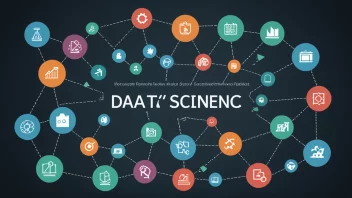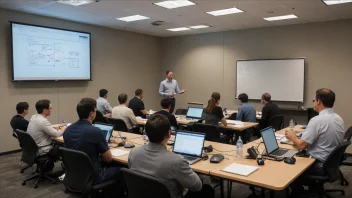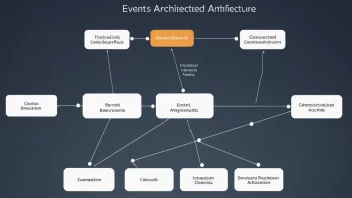In today's digital landscape, the importance of privacy cannot be overstated. As organizations increasingly rely on technology to drive their operations, the need for robust data privacy and security practices becomes paramount. A privacy-conscious development team is essential for designing and building products that respect user privacy and comply with regulatory frameworks. This article delves into the key components of building such a team, exploring the necessary skills, practices, and cultural shifts required to prioritize privacy.
Understanding the Importance of Privacy
Privacy is a fundamental right in the digital age, and its significance is further underscored by regulatory frameworks like the General Data Protection Regulation (GDPR) in Europe and the California Consumer Privacy Act (CCPA) in the United States. Organizations that fail to protect user data risk severe penalties, damage to their reputation, and loss of customer trust. Thus, integrating privacy into the development lifecycle is not merely a legal requirement but a business imperative.
Key Skills for a Privacy-Conscious Development Team
Building a privacy-conscious development team starts with acquiring the right skill set. Here are essential skills that team members should possess:
- Data Protection Knowledge: Team members should understand data protection laws and regulations applicable to their operating regions. This includes knowledge of GDPR, CCPA, HIPAA, and other relevant standards.
- Secure Coding Practices: Developers must be adept at implementing secure coding practices to prevent vulnerabilities that could lead to data breaches.
- Data Minimization Techniques: Understanding how to collect only the necessary data and anonymizing it when possible is critical.
- Risk Assessment Skills: Team members should be able to conduct risk assessments to identify potential privacy threats and vulnerabilities within their applications.
- Incident Response Planning: Knowledge of how to respond effectively to a data breach is crucial for minimizing damage.
Creating a Privacy-First Culture
Beyond technical skills, fostering a privacy-first culture within the organization is vital. This involves:
1. Leadership Commitment
Leadership must prioritize privacy, setting the tone for the entire organization. This includes investing in training, resources, and tools that support privacy initiatives.
2. Continuous Education
Regular training sessions on privacy best practices should be conducted to keep the team updated on the latest regulations and threats. This can include workshops, webinars, and access to online courses.
3. Collaborating with Privacy Experts
Engaging with privacy experts or consultants can provide valuable insights and guidance, helping the team navigate complex regulatory landscapes and industry best practices.
Integrating Privacy into the Development Lifecycle
Implementing privacy measures should be an integral part of the software development lifecycle (SDLC). Here’s how:
1. Privacy by Design
Incorporate privacy considerations into the design phase of development. This involves evaluating how data is collected, stored, processed, and shared. Developers should build privacy features into the product from its inception.
2. Conducting Privacy Impact Assessments (PIAs)
Before launching a new product or feature, conduct a Privacy Impact Assessment to evaluate potential risks and compliance issues. This helps ensure that privacy risks are identified and mitigated early in the development process.
3. Regular Code Reviews and Audits
Implement regular code reviews and audits to ensure compliance with privacy policies and secure coding practices. This helps identify potential vulnerabilities and reinforces the importance of privacy within the development team.
Tools and Technologies to Support Privacy
Utilizing the right tools can significantly enhance privacy measures within the development process. Some valuable tools include:
- Data Encryption Tools: Use encryption to protect sensitive data both at rest and in transit.
- Access Management Solutions: Implement role-based access control (RBAC) to ensure that only authorized personnel have access to sensitive data.
- Monitoring and Incident Response Tools: Utilize tools that can monitor data access and detect potential breaches in real time.
Case Studies: Successful Implementation of Privacy-Conscious Teams
Examining real-world examples can provide valuable insights into how organizations successfully built privacy-conscious development teams.
Case Study 1: Tech Company A
Tech Company A faced significant challenges with user data privacy due to rapid expansion into European markets. To address this, they formed a dedicated privacy team comprised of developers, legal experts, and compliance officers. The team conducted extensive training on GDPR, implemented robust data protection measures, and integrated privacy by design into their product development process. As a result, they successfully launched their services in Europe without facing any compliance issues.
Case Study 2: Financial Institution B
Financial Institution B recognized the growing importance of data privacy in the finance sector. They adopted a privacy-first approach by embedding privacy experts within their development teams. This collaboration led to the development of secure applications that prioritized user data protection. Regular audits and updates ensured that their systems remained compliant with evolving regulations, earning them trust from their customers.
Conclusion
Building a privacy-conscious development team is essential in an era where data breaches and privacy violations can have severe consequences. By fostering a culture of privacy, equipping team members with the necessary skills, and integrating privacy measures throughout the development lifecycle, organizations can create products that respect user privacy and comply with legal requirements. As the digital landscape continues to evolve, prioritizing privacy will not only protect users but also enhance the organization's reputation and trustworthiness in the market.






